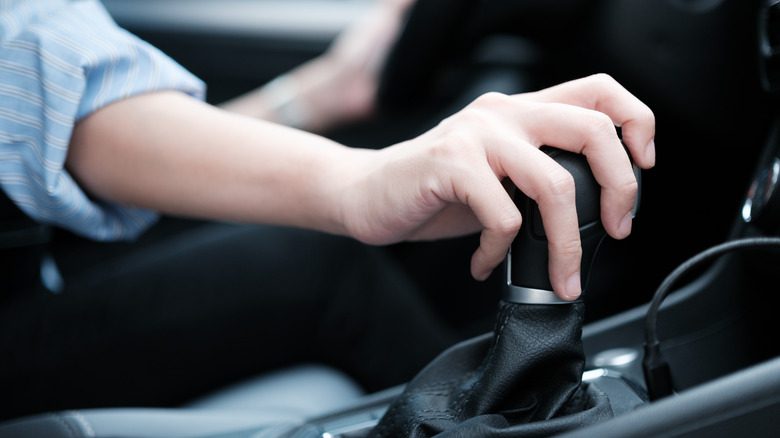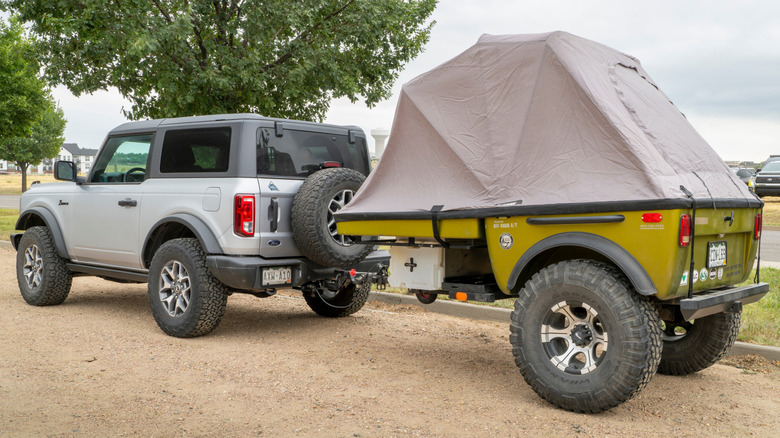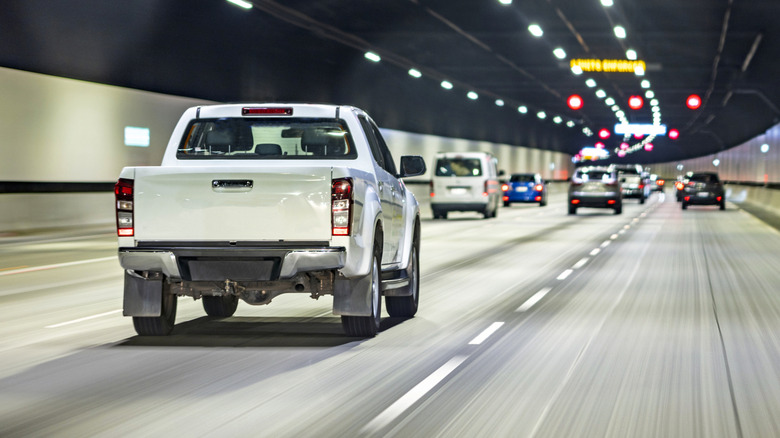When Should You Use The Low Gear In An Automatic Car?
No matter if you prefer a manual transmission over an automatic, the progress of self-shifting transmissions has advanced significantly in recent decades. For a manual box, it is standard practice to shift to a lower gear when going uphill. On the other hand, an automatic spares you the clutch work and achieves the same effect with a simple push of the lever into "L." Put simply, the whole point of an automatic is to relieve you from having to operate it, but in some situations, like engaging low gear mode ("L" on the gear stick), still call for some driver input.
The idea behind low gear mode is to use it when you need more power at lower speeds. Common situations that benefit from it include driving up and down steep hills, off-roading, driving over slippery surfaces, hauling, or towing heavy loads. Here is everything you need to know about when and why to use low gear mode.
The idea behind using low gear mode
Low gear mode provides extra torque and thus is able to help you climb or pull heavy loads even at low vehicle speeds. It relies on engine braking while going down steep hills, which means that the car won't be using its mechanical brakes for a smooth and controlled descent. Such a benefit is especially important while off-roading since it prevents the brakes from overheating or fading due to high temperatures. Many SUV hill descent control features also use engine braking to maintain slow speeds while descending steep hills.
Since the lower gears keep the engine amped with torque at all times, it makes it a lot easier to tow or haul heavy loads, especially from a standstill on hills and country roads. Lastly, because wheel speed is lower than in high gear while still providing steady torque, it allows for more consistent and better-controlled traction on snow, ice, or mud. Therefore, low gear mode is designed for environments where slow wheel speed and high torque are necessary for safe and steady vehicle operation.
Low gear for everyday driving
What it comes down to is that lower gears are not designed for regular high-speed driving where general efficiency and smooth gear shifts are more important than a consistent supply of traction and torque. Low gear mode is going to severely limit your maximum speed to a point where using it on a highway can actually be dangerous. Moreover, driving cars with this mode engaged isn't particularly comfortable since it raises the engine RPM while making it considerably louder.
Furthermore, the "L" mode should only be engaged temporarily, not for continuous driving, typically associated with highways or cruising. Consistently managing a high supply of engine torque can place a lot of wear on the transmission. Always be sure to gradually accelerate and decelerate when using low gear mode since abrupt driving can also strain the transmission. Understanding the ins and outs of using lower gears is one of the most essential factors to keep in mind before going off-roading, so knowing when to use that mode and when not to use it is crucial.


